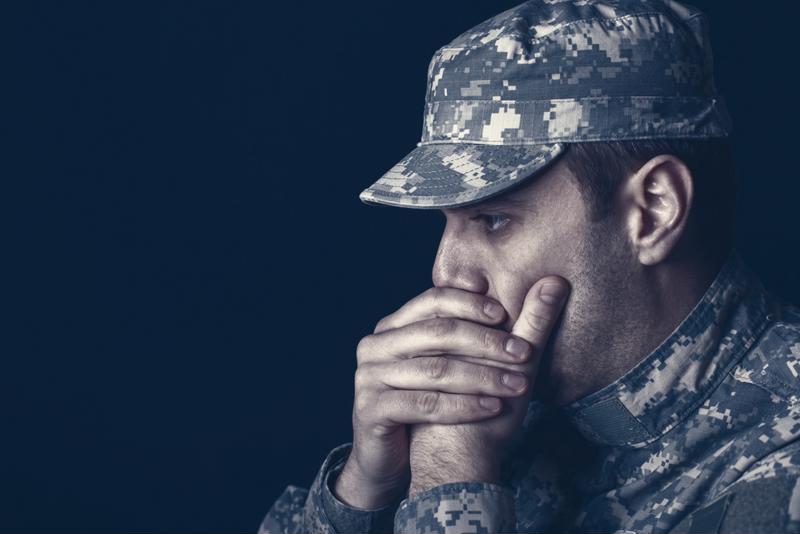Post traumatic stress disorder (PTSD) is a significant concern among military personnel and first responders, who are often exposed to traumatic events in the line of duty. While about 6% of U.S. adults are diagnosed with PTSD, that number jumps to 15% for paramedics and over 23% for military service members.
Understanding how common PTSD is within these groups is crucial for developing effective support systems and interventions. Moreover, the prevalence of PTSD among these populations highlights the need for ongoing research, targeted mental health services, and increased awareness to ensure those affected receive the help they need.
In this article, we'll take a deeper look into how common PTSD is, what its impacts are, and how it's treated.

What Is PTSD And What Are Its Symptoms and Impact?
First, it's important to define post traumatic stress disorder. PTSD is a mental health condition triggered by witnessing or experiencing a traumatic event. It's a complex disorder that can manifest differently from one individual to another, making it a challenge to understand and diagnose.
The American Psychiatric Association's Diagnostic and Statistical Manual (DSM-5) defines PTSD by specific criteria, including:
- Exposure to trauma.
- The presence of intrusive symptoms.
- Avoidance of trauma-related stimuli.
- Significant changes in mood.
Common PTSD symptoms include flashbacks, severe anxiety, uncontrollable thoughts about the traumatic event, and heightened reactivity to stimuli are common. Understanding these symptoms can help in identifying individuals who may be suffering in silence and guide them toward seeking help.
PTSD also has a complex relationship with other mental health issues such as depression, anxiety, and substance abuse. Without proper treatment, individuals with PTSD may face significant challenges in their personal relationships, employment, and overall quality of life, emphasizing the need for effective support systems and interventions.
How Common Is PTSD in Veterans?
The prevalence of PTSD among veterans varies significantly, influenced by factors such as the nature of their deployment, combat exposure, and unfortunately, gender. In fact, women veterans are 9% more likely to experience PTSD than male veterans due to higher rates of sexual assault and harassment, according to the National Center for PTSD.
Studies also show that PTSD prevalence is notably high among veterans of recent operations, with estimates suggesting that up to 29% of veterans who served in operations Iraqi Freedom and Enduring Freedom may suffer from PTSD. These figures point to the critical need for comprehensive mental health support and resources for veterans, emphasizing the importance of recognizing and treating PTSD symptoms early.
The incidence of PTSD is not limited to recent conflicts. Veterans of the Gulf War and the Vietnam War also report significant rates of PTSD, with some estimates suggesting that PTSD affects about 30% of Vietnam War veterans.
Do First Responders Get PTSD?
While they don't see military combat, first responders, including firefighters, police officers, and emergency medical personnel, are at a heightened risk for developing PTSD. This is due to their frequent exposure to traumatic events as part of their job, with around 80% reporting a traumatic experience while on the job.
While there are many support services available within the career services sector of these professions, including mandatory therapies and time off, there are a high number of volunteer first responders who either don't qualify for these services or who aren't required to attend.
How Can You Treat PTSD?
A variety of PTSD treatment options are available, each tailored to meet the individual needs of those affected by this disorder. Therapy, including cognitive-behavioral therapy (CBT) and eye movement desensitization and reprocessing (EMDR), has been shown to be effective in treating PTSD. Medications, such as selective serotonin reuptake inhibitors (SSRIs), can also play a crucial role in managing symptoms. The choice of treatment depends on the severity of symptoms, the individual's preferences, and their overall mental health condition.
Whether it's through VA health care systems for veterans or civilian health care providers for the general population, access to knowledgeable and compassionate care is essential for effective treatment.
Combining everyday care with specific treatments for PTSD can significantly improve symptom management. Lifestyle changes, such as regular exercise, healthy eating, and mindfulness practices, can complement formal treatment plans and help individuals regain a sense of control over their lives. Support from family and friends, along with professional guidance, creates a comprehensive care approach that addresses the multifaceted nature of PTSD, promoting recovery and improving quality of life.
Helpful PTSD Resources
While there are many support services available within the career services sector of these professions, including mandatory therapies and time off, there are a high number of volunteer first responders who either don't qualify for these services or aren't required to attend.
If you or a loved one is in a first responder profession, be sure to ask and be aware of the options available for leave of absence, time off, and therapeutic services, all of which can help catch early warning signs of the disorder and even lower the severity of symptoms.
Check out the valuable resources below for more information:
SAMHSA: Call 1-800-662-HELP
Veterans Crisis Line: 1-800-273-8255, press 1
PTSD Foundation of America: Support groups
CopLine: (Law Enforcement Only): 1-800-267-5463
AllClear Foundation (all First Responders): Text BADGE to 741741 (crisis text line)

